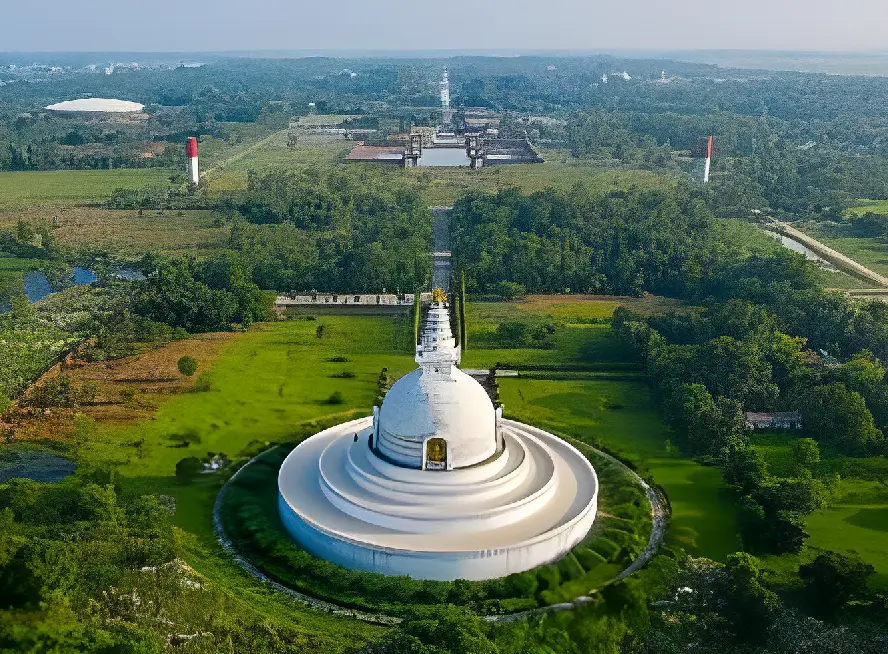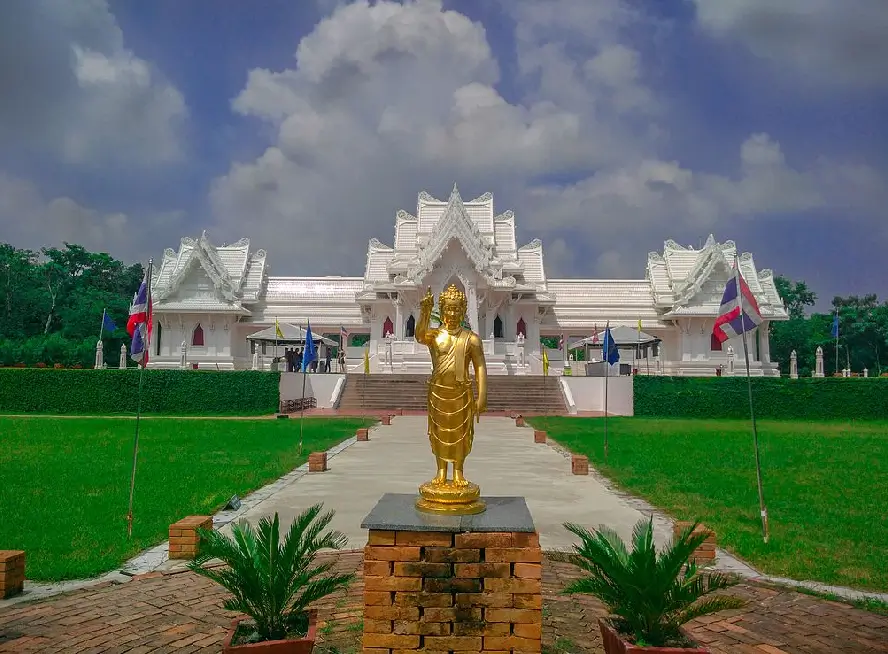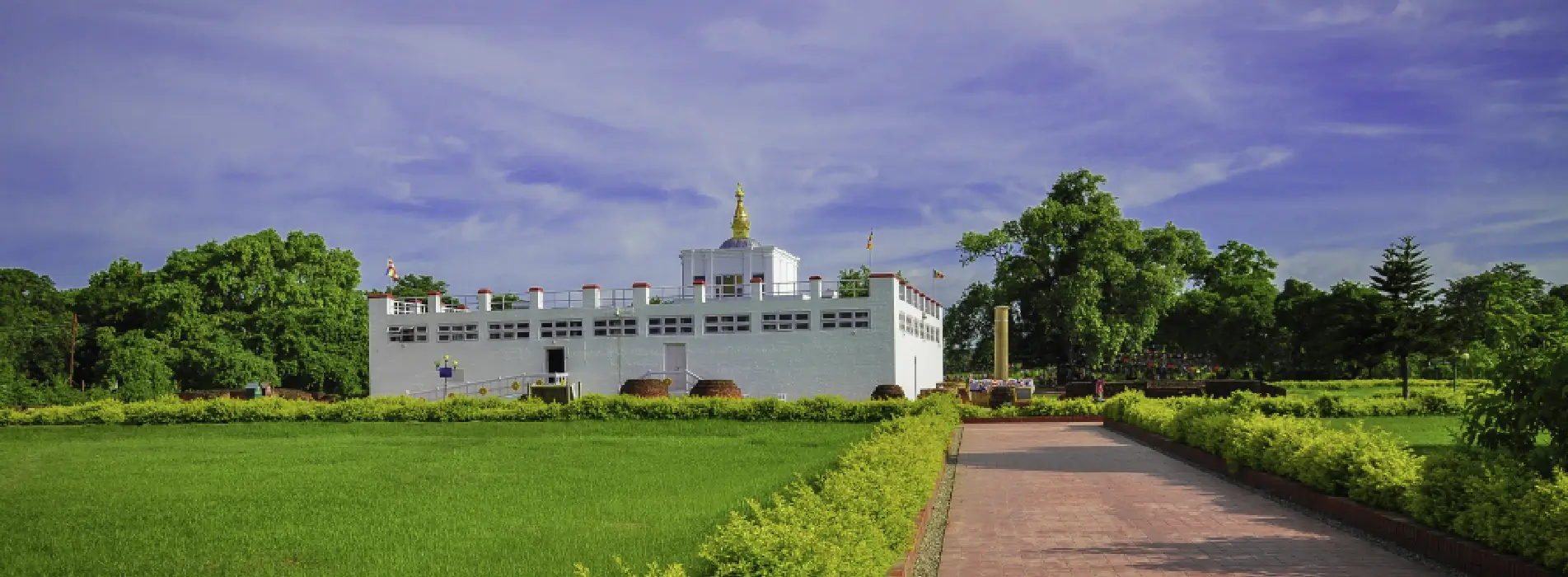Lumbini (Nepal)




Lumbini (Nepal)
The birthplace of the founder of Buddhism and the enlightened one - Gautam Buddha, Lumbini is the among most revered destinations for the followers of Buddhism. The place is now a significant pilgrimage centre and houses many monasteries, temples, and spiritual places. Among many popular sites, Maya devi temple is the must-visit attraction in Lumbini. Maya devi temple is said to be built at the exact place where Queen Maya gave birth to Lord Buddha. The site also has a sacred pond in which queen Maya took bath before giving birth and prince Siddharth took his first bath. The serene atmosphere allures visitors and leads them to a spiritual aura. You can find the image and idols of Buddha in different mudras throughout Lumbini.
Although it is known that it is the birthplace of Siddhartha Gautam, the exact date of birth is part of debate among historians. Nevertheless, it is believed that Gautam Buddha was born between 566 to 480 BCE. Many Buddhist texts like Pali Canon and Sanskrit scripture like Lalitavistara narrate the story of queen Maya giving birth to Siddharth Gautam in Lumbini. This is the reason for Lumbini being the beacon of pilgrimage known around the world. The earliest concrete evidence of Buddhist reference comes from the years when Ashoka visited Lumbini and erected a pillar to commemorate the Buddha in Lumbini around 249 BCE. The inscriptions in Brahmi script on the pillar say much of history about the place and its association with Buddha. Lumbini thrived as a prominent pilgrimage site for centuries and had a collection of temples and monasteries dedicated to Buddha. Two Chinese pilgrims named Faxian and Xuanzang accounted for their visit to Lumbini in around the 5th to 7th century CE. Unfortunately, Lumbini lost its prominence as a renowned Buddhist site slowly and remained unnoticed for centuries till the 19th century. In the year 1896, the rediscovery of Ashoka Pillar renewed the interest of the world towards Lumbini again. This led to several archaeological excavation and restoration efforts. In the year 1997, Lumbini was inscribed as a UNESCO World Heritage Site solidifying its prominence as a Buddhist site again universally. Now Lumbini is a symbol of peace, compassion, and enlightenment.
Lumbini, being the birthplace of Lord Buddha is concentrated with a lot of monuments and Buddhist pilgrimage places. This is because, after Buddha's death, numerous temples were built dedicated to Budhha and his mother Queen Maya. One must explore the monasteries in Lumbini which are living remembrances of Buddha's life. One can not only visit these monasteries but can also stay and experience the culture and living style of Buddhist monks. Among many, the top monarchies include Myanmar Golden Temple, Chinese Monastery, and Mahamaya Monastery. Mahamay monastery is the establishment of the Thai government with intricate Thai architecture and houses a meditation hall and a library with all the knowledge you can get related to Buddhism. The Myanmar Monastery is characterised by its Burmese-style stupa. It has a prayer hall and also offers meditation courses and cultural programs. Another significance is the Chinese Monastery which showcases the Chinese architecture with a serene environment for meditation and cultural exchange. Other monasteries to visit in Lumbini include Great Lotus Stupa, German temple, the Mahabodhi Society Temple and others.
For tourism-style meditation practice, one can visit the revered Maya Devi Temple dedicated to Queen Maya, the mother of Gautam Buddha. The temple has a holy Bodhi tree under which one can practice meditation. This tree is where Maya Devi rested while giving birth to the lord Buddha, thus among major things to see in Lumbini. Maya Devi Temple also has ancient ruins dating back to the 3rd century BCE. The present structure of the temple was built in the 20th century.





















